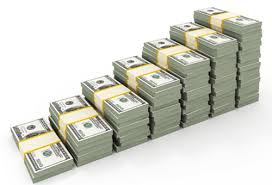 I had the pleasure of having dinner with a mutual fund portfolio manager who manages over $8 Billion and who has the impressive record of outperforming the S&P 500 over the past 10 years. In other words, a Wall Street insider and real pro. My apologies upfront for not revealing his name and giving you specifics about him. But frankly, I’m better able to offer my readers more candid insights by allowing him to remain anonymous.
I had the pleasure of having dinner with a mutual fund portfolio manager who manages over $8 Billion and who has the impressive record of outperforming the S&P 500 over the past 10 years. In other words, a Wall Street insider and real pro. My apologies upfront for not revealing his name and giving you specifics about him. But frankly, I’m better able to offer my readers more candid insights by allowing him to remain anonymous.
I found some of his pithy comments especially interesting. He said that “in this business, we tend to overcomplicate things.” As I think back over the years, that is certainly the tendency of my students, just as it was of myself as a novice investor. He went on to explain that despite what academics want you to believe, the market is simply not efficient. An equity does have fundamental intrinsic value, but the market is consistently overestimating or underestimating what that true value is. This is precisely why he has been able to outperform the market.
He listed four categories that he considers the “spectrum of opportunity”. He looks specifically for those equities that qualify in one or more of these categories.
1) A company whose earnings power is not fully realized or understood by the market.
2) A corporate turnaround.
3) An equity in an industry undergoing specific transformation.
4) An equity that is the beneficiary of a macroeconomic shift.
In his eyes, corporate investor relations departments are akin to college cheerleaders. They generally tell you what they want you to hear, and it’s almost always bullish and of absolutely no value on the sell side. Charts, however, will start to reflect early deterioration in a stock – thereby telling you when someone is sniffing out the beginnings of something negative. The price actions of competitors stocks (what I always refer to as sister stocks) are also a good place to look for the beginnings of more widespread price decay.
Finally, he emphasized the need to cut your losses fast, to minimize your mistakes, to conserve capital and to ask questions later about why a trade went south. I found it enlightening that he referred to himself as “everyman”. He maintains that he has no secret sauce, no magical indicators. In fact, my personal feeling was that he has some major disadvantages over individual investors due to his size and the attending legal restrictions on his moves and operations.
The morning after our dinner, I sat down to reflect on why he is so successful. I was struck by four important attributes.
1. He has an appetite for the game. He likes what he does, and he embraces investing with both arms.
2. He has his routines and a methodology that he trusts and executes diligently.
3. The corporate structure provides him with a disciplined framework that he must follow. This is non-negotiable for him. (We individual investors must somehow replicate that on our own.)
4. His compensation is tied to exceeding his benchmark index. With Wall Street’s generous bonuses, I am certain this offers him additional motivation.
This $8 Billion man is a true investment star. A very successful and consistently profitable mutual fund manager. My key takeaway from dinner: there is absolutely nothing standing in the way of a dedicated individual investor from becoming an equally accomplished star. You just need the appetite, the dedication, the discipline and the motivation.
Trade well; trade with discipline!
-- Gatis Roze, MBA, CMT
Developer of the StockCharts.com Tensile Trading ChartPack.
Presenter of the Tensile Trading DVD, Stock Market Mastery.
P.S. Click HERE for information on my future appearances & seminars.






